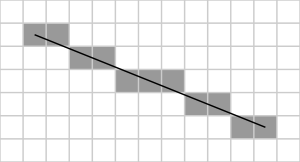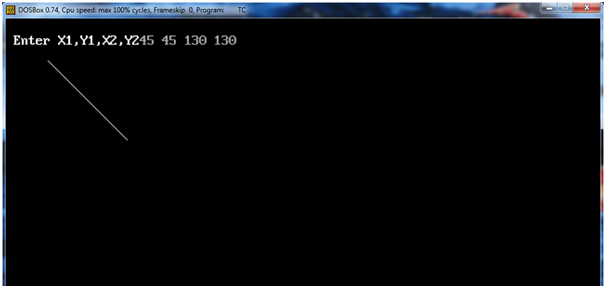Bresenham’s line algorithm is an algorithm that determines the points of an n-dimensional raster that should be selected in order to form a close approximation to a straight line between two points. It is commonly used to draw lines on a computer screen, as it uses only integer addition, subtraction and bit shifting.

(Via Wikipedia)
Here is C++ implementation of this algorithm.
#include <graphics.h>
#include <stdlib.h>
#include <stdio.h>
#include <conio.h>
#include <iostream.h>
int main(void)
{
/* request auto detection */
int gdriver = DETECT, gmode, errorcode;
/* initialize graphics and local variables */
initgraph(&gdriver, &gmode, "C:\\tc\\bgi");
cout<<"\n Enter X1,Y1,X2,Y2";
int x1,y1,x2,y2;
cin>>x1>>y1>>x2>>y2;
int dx=x2-x1;
int dy=y2-y1;
int x=x1;
int y=y1;
int e=(2*dy)-dx;
for (int i=0;i<=dx;i++)
{
putpixel(x,y,15);
while(e>=0)
{
y=y+1;
e=e-(2*dx);
}
x=x+1;
e=e+(2*dy);
}
/* clean up */
getch();
closegraph();
return 0;
}
Output:

